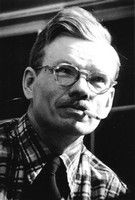
|
|
|
|
Kenneth Stubbs
Tradition and Idea: Works on Paper
Kenneth Stubbs arrived in Provincetown in the early 1930s. Skirting the more traditional Hawthorne school, he opted for the modernist teachings of E. Ambrose Webster's Summer School of Painting. Having recently graduated from the Corcoran School of Art, Stubbs continued his studies of the art movements of his day.
The watercolors of the '30s speak elegantly of early cubist concerns. Geometric abstraction was still in its infancy in America, and Stubbs gravitated to it. His watercolor of "The Tree" is reminiscent of a Cezanne hillside, painted as if carved into paper. The tradition in Stubbs' subject matter is fundamental, but the language is prerequisite to abstraction. Fields of angularity, or shadows chipped and squared, set up tonal syncopations. Images are less distorted than pulled and tightened into meter-like compositions. He had a love of Piero della Francesca which is accentuated in the subtle light and geometric exactness of these works. This becomes all the more present in his casein paintings in which color becomes paramount to nature, and structure is pared down to the facets of light and time.
Stubbs drew only in this fashion in his early years; perhaps the need to form a modernist mindset took complete concentration. As he became determined in his outlook, his drawing became the foundation to his paintings, no longer just renditions or preparatory sketches for them. Inspired by his surroundings, Stubbs was a draughtsman of great facility.
He treats his home on Bradford Street not as a portrait but rather a scene of reverence, knowing well its comforts and purpose. The dune watercolors and Sumi ink drawings flow with economy and ease. Marching whites, fore to background, with spits of grey and green, are weighted with as much that is put on the paper as is left out. White is always substantive in Stubbs' work. The later contour drawings present a journey of line as shown in the drawing of Provincetown atop its shadow-soaked cemetery bathed in dark blue, and as shown in the grey Italian tunnel unfolding into a light-filled piazza leading us toward his own experience. We find a vivid loneliness in these drawings which bespeak the artist as interpreter; not as a man against the world, but as a man intertwined with his world, an almost possessive rendering.
Today we are fortunate to find this gathering of works on paper. Kenneth Stubbs was a Provincetown painter of great discovery, a man with a clear and certain voice of his time.
- Bob Bailey (July 2000)
|
|
|
|
